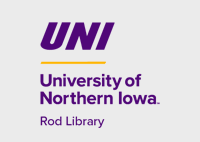Graduate Research Papers
Availability
Open Access Graduate Research Paper
Abstract
My job as a high school teacher is a continual quest for helping my students explore and learn about the biological world. However, I also would like them to be self-motivated learners who develop 21st Century Skills to help them succeed as they move on to future learning, working and living experiences. I would like to use ICT (Information, Communications & Technology) tools such as Google Apps and Moodie along with other Web 2.0 tools and incorporate them into my life science curricula in order to meet the following three goals:
The first goal is to take advantage of the learning opportunities that are available on the internet. There are many web-based and non web-based tools available for teachers to use while teaching science and for students to use while learning science. The second goal is to encourage students to use technology while they are learning about science. In the Iowa Core Curriculum science section, one of the essential concepts is for students "to use technology and mathematics to improve investigations and communications. A variety of technologies, such as hand tools, measuring instruments, and calculators should be an integral component of scientific investigations. The use of computers for the collection, analysis, and display of data is also a part of this standard." (Iowa Core Curriculum Website, n.d.)
Students need to gain 21st Century Skills during their K-12 education. One of these 21st Century Skills is Technology Literacy. According to Iowa Core Curriculum (n.d.), "Each Iowa student will be empowered with the technological knowledge and skills to learn effectively and live productively." Using many types of technology in multiple ways in science class will give students learning experiences that they can use after they leave school.
The final goal is to get students to use internet-based classroom resources with relative ease. Many students are comfortable using their cell phones and programing remotes, but they are not comfortable using science-based technology in class. As Hargittai (2010) has noted, "the more general scholarly literature on Internet use suggests that even once people cross the initial connectivity divide, numerous differences remain among them when it comes to how they incorporate the Internet into their lives." pg. 94.
Pella Community Schools use Google© Apps and all students have a Google© email account. I will incorporate the use of a Google© Site created by me for my life science classes as a student-centered instruction and learning management tool. I also have access to the learning management system called Moodie©, which gives me more control over assignments to be handed in, blogs to be written and quizzes which can be taken online. I plan on utilizing other Web 2.0 tools in my curricula as I discover them during the school year.
I will incorporate the use of Google© Sites as a learning management system for my science classes. I want a standard delivery system that allows me to link my students to documents, Web 2.0 resources, videos, blogs, and any other resource I found during the unit. Because Google© Sites is available to both myself and my students, I chose to use that delivery system for my life science classes as a student-centered instruction tool. This tool needed to be easy for me to manipulate and modify, easy for the students to get to and could be linked to the majority of the technological tools that my students would be using.
Year of Submission
2013
Degree Name
Master of Arts in Education
Department
Science Education Program
Date Original
5-2013
Object Description
1 PDF (ii, 80 pages)
Copyright
©2013 Cathy Hones
Language
en
File Format
application/pdf
Recommended Citation
Hones, Cathy, "Student Centered Instruction & Incorporation of Information, Communications and Technology (ICT) into the Life Science Curriculum" (2013). Graduate Research Papers. 4556.
https://scholarworks.uni.edu/grp/4556




Comments
If you are the rightful copyright holder of this graduate research paper and wish to have it removed from the Open Access Collection, please submit an email request to scholarworks@uni.edu. Include your name and clearly identify the thesis by full title and author as shown on the work.